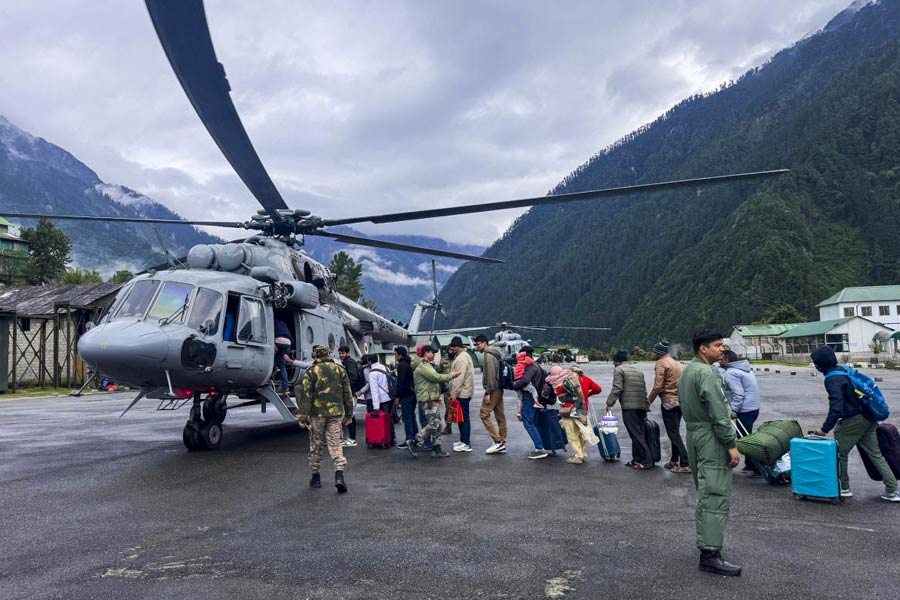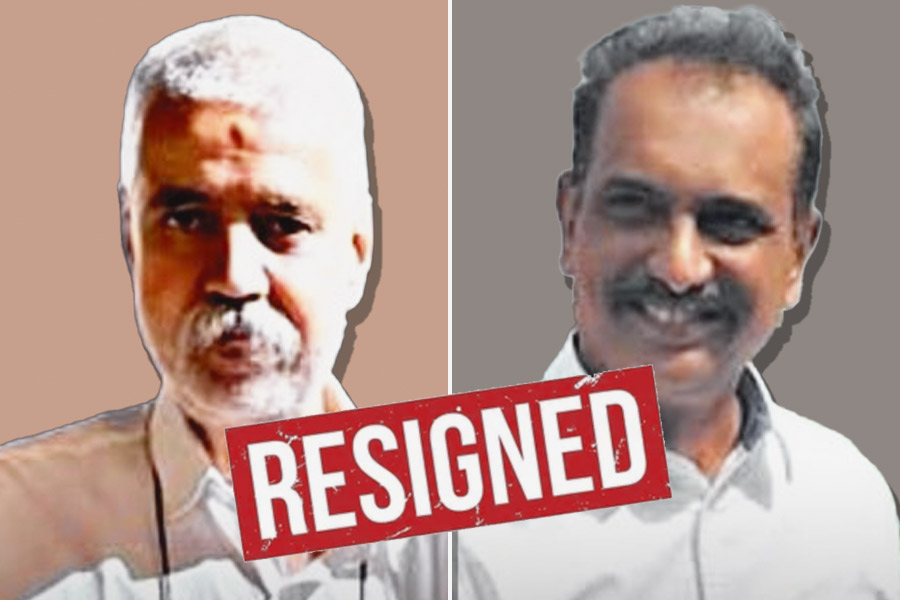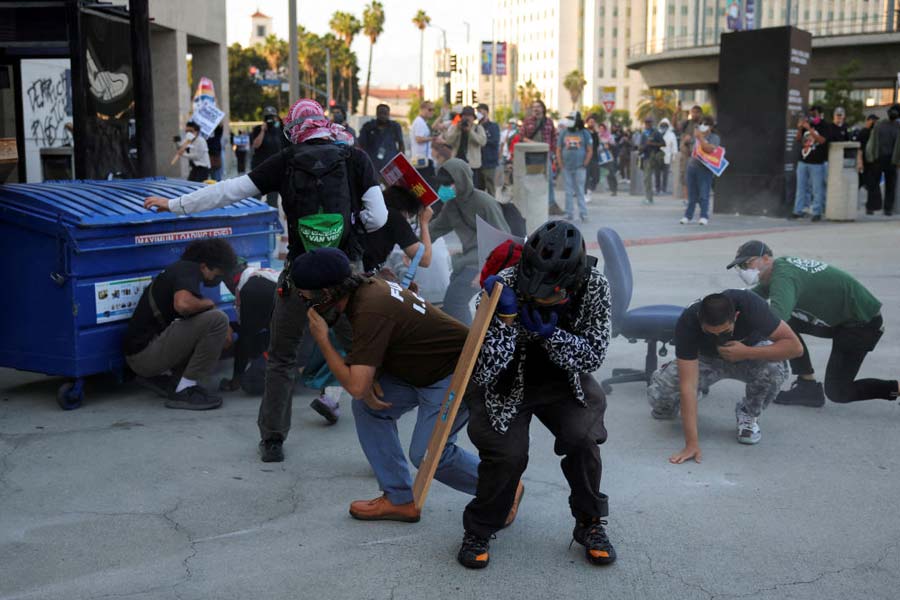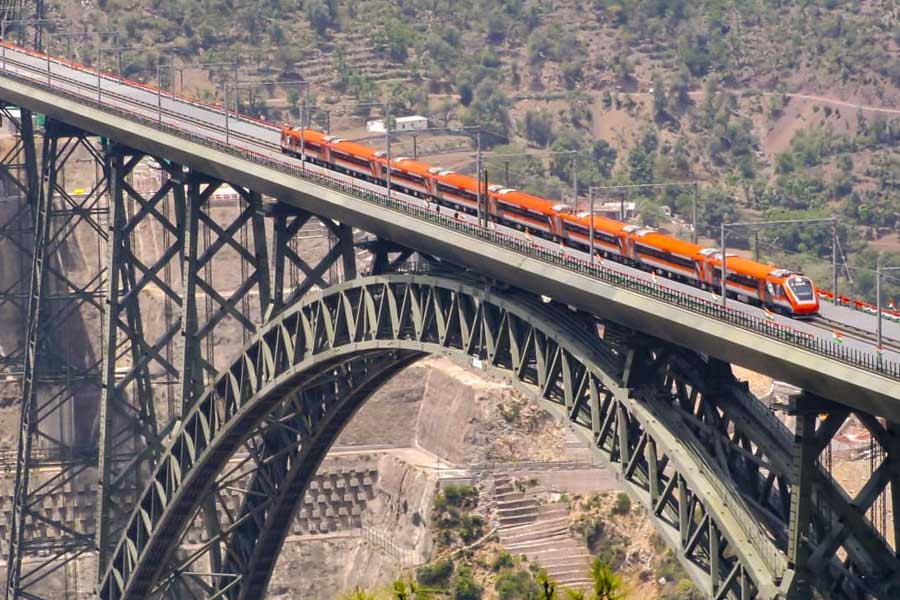|
|
 |
| RAISING A VOICE: Anti-POSCO demonstrators observe a black day in Bhubaneswar (top); a graphic image of the POSCO-India steel plant Photos: Sanjib Mukherjee |
Arjun Prasad Jalan won’t forget the day. The president of the Federation of the Jharkhand Chambers of Commerce and Industries was celebrating the fact that the Jharkhand government had capped its investment efforts with a memorandum of understanding (MoU) with Mittal Steel for a mega plant on October 8, 2005. The dawn of industrialisation he had long hoped for had finally broken over the eastern state. Or so he thought.
Eight months on, Jalan’s hope for an industrialised Jharkhand is fast fading as projects get snared in what he calls governmental dithering. “Nothing is happening on the ground now,” the businessman frets.
In neighbouring Orissa, Utkal Chamber of Commerce and Industry president M.V. Rao, too, is despairing. “I don’t know what’s going on in the government, but nothing seems to be moving on the industrial front at the moment,” Rao says.
Keen to make the most of a prospective industrial boom in Orissa, which attracted a large chunk of investments in the last couple of years, the chamber of commerce even floated a company called Utkal Infrastructure Development Consortium Private Limited in June last year. “We thought our members would benefit from industrialisation. But the projects are getting delayed,” Rao says.
To be sure, Jharkhand and Orissa (both rich in minerals yet stricken with poverty) are taking the lead in industrialisation in eastern India, drawing a sizeable amount of domestic and foreign investments in steel and mining. If the Arjun Munda government in Jharkhand has signed 45 MoUs worth a total investment of Rs 1,90,000 crore, the Naveen Patnaik government in Orissa is not lagging far behind. It has inked 43 deals with steel and mine companies, promising an investment of over Rs 1,37,000 crore. If anything, the eastern states, ruled by the Bharatiya Janata Party and its allies such as the Biju Janata Dal, have been on the fast industrial development track.
Or so it seemed even a few months ago. Today, nobody is sure whether the plans are ever going to take off. True, both governments have signed a large number of MoUs, but mostly with medium-sized steel and mining companies. In reality, the Jharkhand and Orissa governments are focusing ? and counting ? on big-ticket investors such as the Mittals, Jindals and Tatas to turn their states into industrial powerhouses. Not surprisingly, concerns are mounting now that some of the big projects have hit a roadblock.
Land has emerged as the key issue with some of the big projects facing large-scale protests from residents fearing displacement. Mining leases are another stumbling block to industrialisation, with the delay in granting leases holding back projects in both states. POSCO is a case in point. Billed as the country’s biggest foreign direct investment, the 12-million tonne steel plant of the South Korean major, which is to pump in $12 billion or Rs 51,000 crore for the project slated to come up in three phases, has run aground near the coast of Paradip in Orissa. It needs 4,000 acres to put up its plant in Jagatsinghpur district, but land acquisition is being delayed because of stiff opposition from local residents.
The agitation, which has been on for the last few months, has intensified of late, with social activists and the Communist Party of India jumping into the fray. “The government has raised the compensation, but people don’t want more money. They just do not want to be tossed out of their homes,” Orissa CPI state council member Prasanta Paikray says.
The “anti-POSCO” movement also enjoys the blessings of the Congress party, which has openly questioned the “preferential treatments” given to the Korean steel giant, including a captive port and water from the Jobra barrage over the Mahanadi.
“We are not against industrialisation or any company but the chief minister must explain why his government has taken measures that will adversely affect the existing Paradip port and hamper irrigation facilities in the area,” says Congress leader and former Bhubaneswar MP Soumya Ranjan Patnaik.
To add to POSCO’s woes, the licence it applied for in September to prospect iron ore in Keonjhar and Sundergarh is yet to come through. No wonder then that the company’s patience is wearing thin. After all, it has already sunk in $51.3 million to float its subsidiary to run its India operations. Earlier this week, POSCO India chairman and managing director Cho Soung-Sik issued a veiled threat to pull out if the land acquisition and mining issues were not settled soon.
“We don’t want to become a political football in Orissa,” Cho Soung-Sik says, stressing that captive mines, opposed by the opposition parties, are vital to the project. “We have to have these,” he says.
However, POSCO is not the only one to get submerged in the murky waters of Orissa’s politics. Tata Steel’s proposed six million tonne plant, too, is floundering in Kalinganagar even though large swathes of land were acquired for the project in the early Nineties. But the acquisition remains mostly on paper. The company faces stiff local resistance. Twelve people were killed in police firing in Kalinganagar in January when they tried to stop work on a wall being built around the proposed plant.
The incident was a blow to the state’s industrialisation process. A wary state administration has since done little to deal with the agitators in Jagatsinghpur, who even shut the local revenue inspector’s office to protest against the POSCO project. “Work on land acquisition has virtually come to a standstill following the Kalinganagar incident,” Rao of the Utkal Chamber of Commerce and Industry rues.
Things are no different in Jharkhand, where projects are in a limbo. Local residents, fearing displacement, forced Tata Steel officials to turn back when they visited their proposed plant sites in Manoharpur and Saraikela recently. The Tatas need 24,500 acres for the 12 million tonne green field project and another 6,000 acres for the expansion of its plant in Jamshedpur. Jharkhand officials concede that acquiring 25,000 acres of land for Mittal Steel’s 12 million tonne plant is not going to be easy either, once the company picks its site.
Girinath Singh, the Rashtriya Janata Dal leader in the Jharkhand Assembly, holds that people have “no faith” in the government. “In any case, how can you drive the poor tribals from their homeland in the name of industrialisation when this state was created largely to protect their interests,” Singh asks.
To make things more complicated, the Munda government is yet to come out with its mining policy. Nor has it announced its long overdue resettlement and rehabilitation policy. Jharkhand mines and geology secretary S.K. Satpathy says the government has nearly finalised its policy on coal, but not on iron ore, the raw material steel plants need most. “We are in the process of doing so. Some delays are inevitable as we are trying to do it in a transparent manner,” he says.
Such words are hardly soothing for apprehensive investors. The Mittals have already asked for a “letter of comfort” from the Jharkhand government regarding the mining lease. Sanak Mishra, the CEO of Mittal Steel Jharkhand, has written to the government seeking assurances that it would get the requisite iron ore within two months. Mishra made it clear that the delay would hamper the project as “no company would make any investment unless it is assured of its basic requirements”. The Mittals plan to invest Rs 40,000 crore in the green field project in the state.
Infrastructure also remains a problem. Even though roads have improved in many parts of the state over the last five years, the dearth of power is still a concern for investors. “If nothing else, where is the water for all these steel plants,” a Tata official in Jamshedpur asks.
Not unreasonably, both Orissa and Jharkhand look to industry to exploit their mineral resources and lift their states out of poverty. Orissa chief minister Naveen Patnaik says the state needs the industrial units to create jobs and revenue. “We will see these projects through,” he vows.
Of the 4,000 acres required for POSCO, Patnaik says 3,500 acres are government land. “We need only 500 acres of private land for which adequate compensation will be paid,” he says.
Unlike Jharkhand, the Orissa government has already come out with a resettlement and rehabilitation policy, which, Patnaik says, is among the best in the country. It promises a job to a member of each displaced family or a cash compensation of up to Rs 5 lakh.
Jharkhand finance and urban development minister Raghubar Das says the state government is trying to bring in industry “without sacrificing” the interests of the people. “We are drafting a rehabilitation package that will be too good to be refused.” Industrial units, he holds, will address the problem of rising unemployment. “We will carry on our efforts irrespective of the opposition we face,” he vows.
But it’s not easy when the Munda government, which has a razor-thin majority in the Assembly, is far more busy with its survival than anything else, as Harivansh, chief editor of the Ranchi-based Hindi newspaper Prabhat Khabar puts it. The effect of political instability is felt nowhere more than at the state secretariat. “You can deal with one chief minister, but this state has five chief ministers,” an official says, alluding to a group of five powerful ministers, known informally as “G5,” that Munda relies on for survival. “Political stability is a prerequisite for industrial development. Unfortunately, it’s not there in Jharkhand,” Jamshedpur-based industrialist Bikash Mukherjee says.
In any case, not everyone agrees with the industrialisation efforts of the two states. Babulal Marandi, Jharkhand’s first chief minister and former BJP leader, says the priority for Jharkhand should be building its physical and social infrastructure. “We need better roads, power and, of course, education. The law and order situation also needs to be improved and we need to contain the Maoist violence,” says Marandi.
Industry, he holds, will come automatically once the infrastructure is in place. “These companies come here to exploit our mineral resources but will do the value addition elsewhere. The state should create a situation when the Tatas will not only make their steel here but also their soaps and oils,” Marandi contends.
Many agree. Ranchi University vice-chancellor A.A. Khan, too, feels that the state needs to invest more in primary and higher education. “There is a complete lack of infrastructure and a large number of vacancies in schools and colleges. It’s a shame,” the educationist exclaims.
Industry is cautious as well. Tata steel managing director B. Muthuraman says Jharkhand’s agricultural sector also needs to be boosted while building infrastructure for industrialisation. Muthuraman stresses the need for “laying solid foundations for the education of the younger generation” in a state where more than 50 per cent of the population is illiterate.
In Orissa, too, there are “genuine concerns” that need to be addressed, says Subhrakant Panda, managing director of the Bhubaneswar-based IMFA group and chairman of the Confederation of Indian Industry’s Orissa state council. “But at the same time, vested interests trying to stall the state’s industrialisation should be dealt with,” he says. The CPI’s Prasanta Paikray is more scathing. “Just whose side is the government on, the people or the multinationals,” he asks.
Whatever the answer to that, all that Arjun Prasad Jalan knows is that he was taken in by a “false” dawn. And the Jharkhand businessman is still waiting for the sun to rise in the east.












